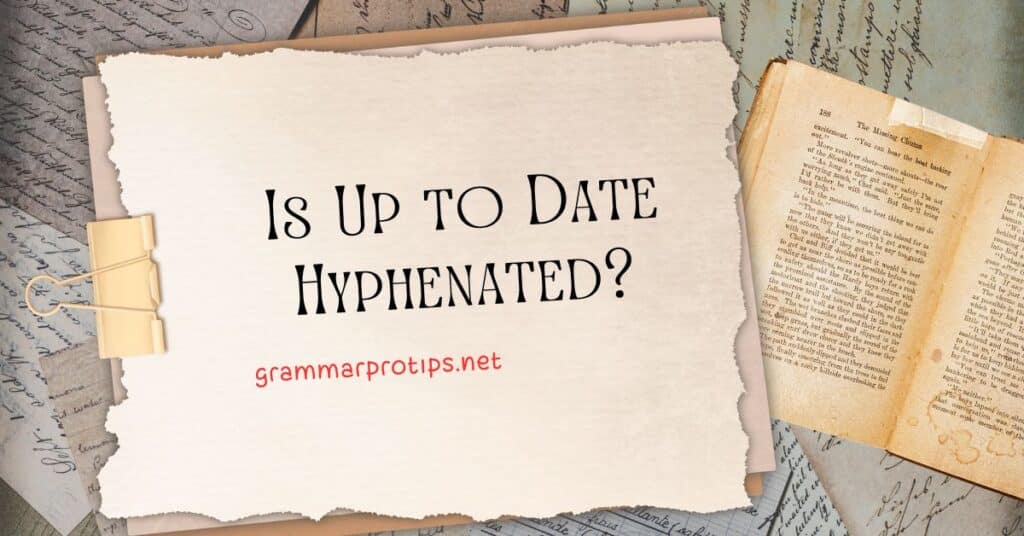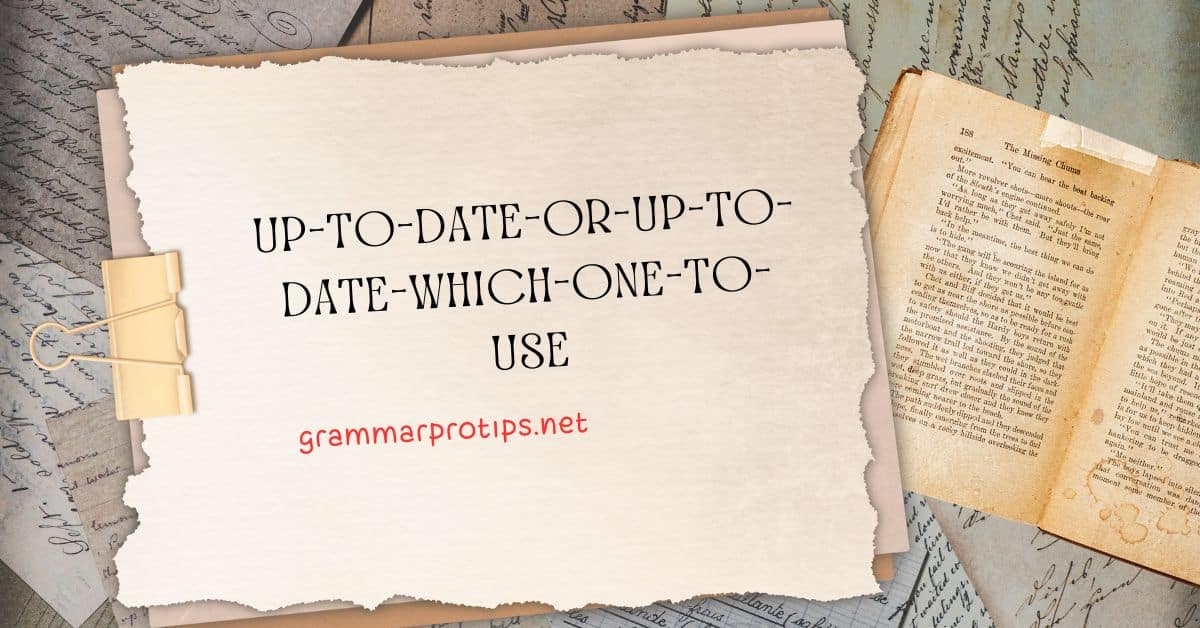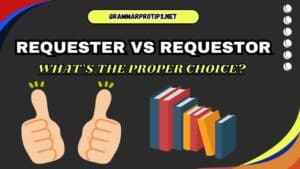When it comes to writing in English, some rules are crystal clear, while others leave us scratching our heads. One common point of confusion is whether to use “up to date” or “up-to-date”.
Both phrases sound familiar, but when it comes to writing, punctuation matters. So, which one should you use? Let’s dive into the details and clear things up.
The Key Difference: Hyphen or No Hyphen?
First things first: “Up to date” without a hyphen is one thing, and “up-to-date” with hyphens is another. The difference between these two forms depends on their role in a sentence. Here’s the breakdown:
- “Up to date” (without hyphens) is typically used as a phrase or adjective, referring to something that is current or modern, but the words are not acting as a single unit.
- “Up-to-date” (with hyphens) acts as a compound adjective, meaning the two words work together to modify a noun. The hyphens bind the words together to form a single descriptor.
When Should You Use “Up to Date” (No Hyphen)?
Without hyphens, “up to date” is often used when you’re not specifically modifying a noun. It functions as a regular phrase in sentences like:
- “I keep my software up to date with the latest updates.”
- “Please make sure the project is up to date by Friday.”
- “She is always up to date with the news.”
In these examples, “up to date” describes something that is current but isn’t directly modifying a noun.
When Should You Use “Up-to-Date” (With Hyphens)?
Now, when you use “up-to-date” with hyphens, you’re using it as a compound adjective, meaning the phrase is functioning together to modify a noun.
The hyphens are necessary because they connect the two words, creating one unified descriptor.
Here are examples where “up-to-date” is appropriate:
- “This up-to-date information is crucial for the meeting.”
- “We need to send an up-to-date report by the end of the day.”
- “The up-to-date version of the software has several new features.”
In these examples, “up-to-date” is modifying the nouns “information,” “report,” and “version.” The hyphen ensures that these words are understood as a unit that describes the noun.
Does “Up to Date” Have Hyphens?
This is a question many people ask. The answer depends on the usage, as discussed. “Up to date” does not have hyphens when it is functioning as a regular phrase or when not directly modifying a noun. However, when it acts as a compound adjective before a noun, it does require hyphens “up-to-date”.
Common Confusion: Uptodate or Up to Date?
It’s easy to get confused with words that appear similar but aren’t quite the same. One frequent mistake people make is writing “uptodate” as a single word. This is not correct. The correct form is “up to date” (two words without hyphens) or “up-to-date” (with hyphens when used as a compound adjective).
For example, you might see someone write:
- “Make sure your software is uptodate.”
But the correct version would be:
- “Make sure your software is up to date.”
OR - “Make sure your software is up-to-date.”
The combined version (“uptodate”) does not exist in proper English usage, so be careful not to mistake this!
Is Up to Date Hyphenated?

A common query is whether “up to date” should be hyphenated at all. As we’ve seen, “up to date” is not hyphenated when it’s a regular phrase, such as in “I keep my schedule up to date.”
However, if you’re using it as a compound adjective before a noun, the correct form is hyphenated. So, you would write “an up-to-date schedule” or “an up-to-date method.”
Scenario 1: An Email to a Colleague
Let’s consider an example where you’re writing an email to a colleague about an upcoming project. This is a scenario where you would likely use “up to date” or “up-to-date” in the message.
Without Hyphens (Phrase Usage)
Subject: Status Update on Project
Dear Sarah,
I hope you’re doing well! I just wanted to check in and see if you’re up to date on the latest changes to the project. We’ve made some progress over the last few days, and I want to ensure everything is aligned.
Please let me know if you need any additional info or resources to keep everything up to date.
Best regards,
John
With Hyphens (Compound Adjective Usage)
Subject: Up-to-Date Project Report
Dear Sarah,
I’m sending over the up-to-date project report that includes all the recent changes. It’s crucial that we stay up-to-date with these updates as we move forward with the next phase.
Please review it and let me know if you have any feedback.
Best regards,
John
Scenario 2: An Email to a Client
Now, let’s say you’re drafting an email to a client and want to discuss the status of a product update.
Without Hyphens (Phrase Usage)
Subject: Product Update
Dear Mr. Williams,
I wanted to reach out and let you know that we’ve made significant improvements to the product. We’re keeping everything up to date with the latest technology, ensuring the best performance.
I’ll be in touch soon to give you a more detailed update. In the meantime, feel free to reach out if you have any questions.
Sincerely,
Emily
With Hyphens (Compound Adjective Usage)
Subject: Up-to-Date Product Information
Dear Mr. Williams,
I’m attaching the up-to-date product specifications for your review. We’ve incorporated the latest features, and I believe this version will meet your needs.
If you have any questions or need further clarification, don’t hesitate to reach out.
Best regards,
Emily
A Quick Table: Up to Date vs. Up-to-Date
Here’s a quick comparison table that summarizes the differences between “up to date” and “up-to-date”:
| Usage | “Up to Date” (No Hyphen) | “Up-to-Date” (With Hyphen) |
|---|---|---|
| Role in Sentence | Regular phrase or descriptive term | Compound adjective (modifies noun) |
| Example 1 | “I keep my documents up to date.” | “This is the up-to-date version.” |
| Example 2 | “I want to stay up to date.” | “We need to send an up-to-date report.” |
| Usage Context | Not modifying a noun | Modifying a noun (before a noun) |
Common Mistakes to Avoid
To wrap things up, here are a few common mistakes people make with “up to date” and “up-to-date”:
- Mistake 1: Writing “uptodate” as one word. The correct form is “up to date” or “up-to-date” (with hyphens).
- Mistake 2: Using “up to date” with hyphens when it’s acting as a regular phrase. It’s only hyphenated when it’s a compound adjective.
- Mistake 3: Confusing “up to date” and “up-to-date” in email subject lines or formal documents.
Conclusion
Choosing between “up to date” and “up-to-date” ultimately comes down to how the phrase is being used. When you’re not modifying a noun, keep it as “up to date”. But when you’re using it to describe something, like a report or a product version, you need the hyphens: “up-to-date”.
By understanding the distinction and using each form correctly, your writing will flow more naturally, and your message will be crystal clear to your readers.

Sienna Mauldon is a passionate writer and grammar expert. On her blog, she shares easy-to-follow guides to help readers master grammar rules and improve their writing. With a love for language and teaching, Sienna makes grammar simple and fun for everyone, from beginners to experienced writers.








